Volkswagen chief executive Martin Winterkorn resigns
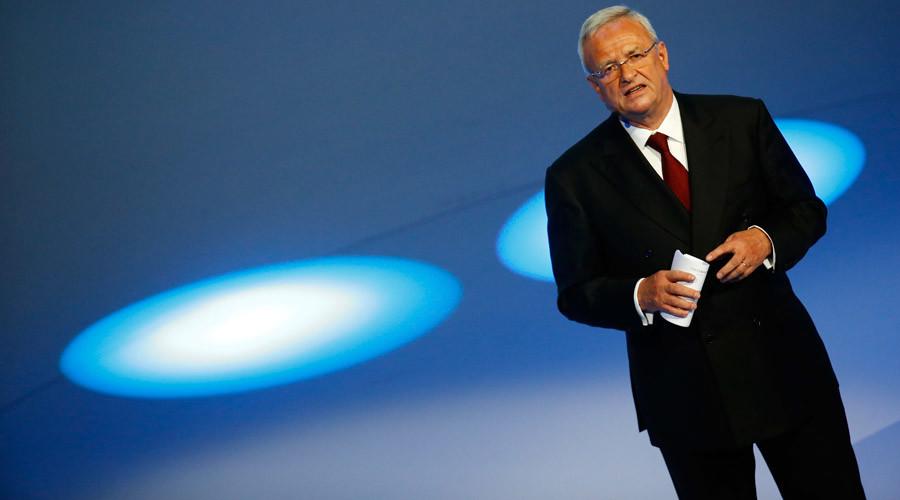
“I am shocked by the events of the past few days. Above all, I am stunned that misconduct on such a scale was possible in the Volkswagen Group,” WInterkorn said in a statement.
READ MORE: Volkswagen troubles piling on as emission scandal evolves
WInterkorn said that as CEO he accepted responsibility for the irregularities found in the diesel engines, and “therefore requested the Supervisory Board agree on terminating my function as CEO of the Volkswagen Group.”
The Volkswagen Group is the world's biggest carmaker. The company owns the Audi, Bentley, Bugatti, Lamborghini, Porsche, SEAT, Skoda and Volkswagen brands.
DETAILS TO FOLLOW
'Can explode at anytime': Scientists reveal giant sinkhole to appear in Siberia
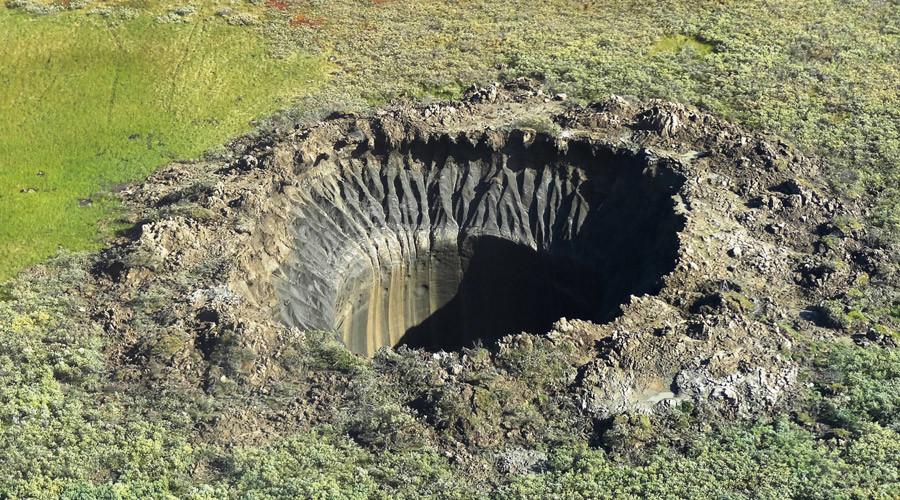
The scientists have located a so-called ‘hillock of swelling,’ which is abnormal in terms of size and form, according to Vladimir Olenchenko, a senior researcher at the Institute of Petroleum Geology and Geophysics in the city of Novosibirsk. He added that the new possible sinkhole is not far from and will be bigger than a massive crater, which was formed last year in Solikamsk.
“We are keeping the coordinates of its location a secret so that this will not lead to a pilgrimage of the scientists and quasi-scientists, as it can explode at anytime,” said Olenchenko.
The scientists are planning to keep track of how quickly this new crater may develop by using aerial and space footage.
READ MORE: Stunning beauty inside mysterious Siberian crater (PHOTOS)
The giant Siberian sinkhole, which was discovered in 2014, is located not far from Gazprom’s Bovanenkovo gas field in Russia’s northern Yamal Peninsula. The 80-meter hole has been gradually filling up with water and is turning into a lake. It currently has a depth of 10 meters, but researchers say it will continue to rise, according to the government website of the Yamal-Nenetsky region.
“The crater is gradually turning into a lake. We proved that it is a natural phenomenon; there are no technogenic reasons for this formation. This is not a rocket or an explosion of a gas pipeline, this is a natural process,” Olenchenko added.
Scientists confirmed that around 20 mini-craters have recently formed around the sinkhole in Solikamsk over the last year, while locals have also discovered other depressions.
The discoveries have led to a number of theories concerning how they were created. These range from a UFO invasion, to the consequences of global warming.
READ MORE: 20 ‘baby’ craters appear near giant hole-turned-lake in Siberia
Experts believe that underground explosions caused by the release of gas hydrates were the reason for the crater’s formation. They had previously warned that rising temperatures will trigger the melting of the surrounding permafrost and the discharge of large amounts of gas hydrartes, which contain as much as 10 times more carbon than the atmosphere. They say this will have a negative impact on the environment.
‘I’ve had enough of Manchester!’ Iranian immigrant begs police to deport him
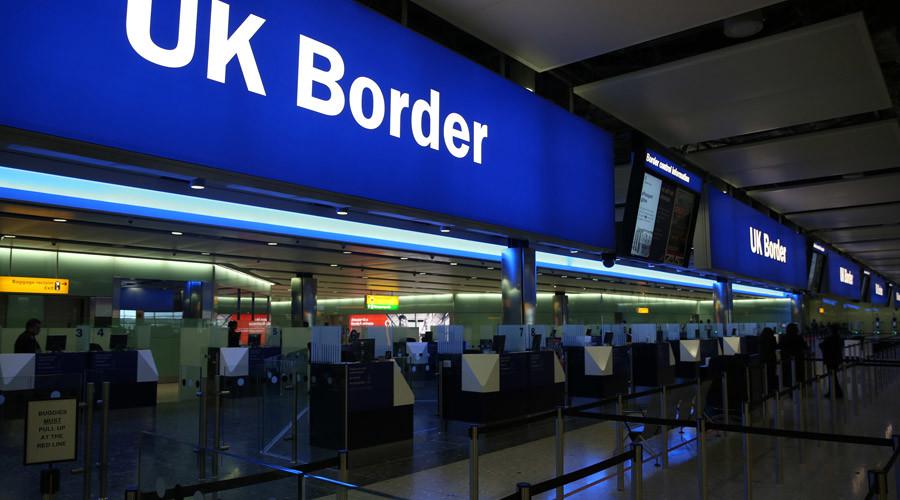
Greater Manchester Police (GMP) tweeted details of the event on an official account on Tuesday evening: “Male arrested earlier at our front desk when he demanded to be returned home to Iran as he has had enough of Manchester after 10 years.”
The man is said to have turned up at the police office in the town hall in the center of Manchester.
They said the individual was “very angry” and “demanding to be returned home.” He had been here “illegally last 10 years,” the police said, adding it had been a“strange incident.”
The Twitter response on Wednesday varied from the comic to the indignant.
User @RyanPitcher said: “I can see it now, some Iranian dude coming in, swinging his arms with a Manc-walk insisting he wants to ‘slide away.’”
Other Twitter users commended the unnamed individual for his staying power, with user @FPL_simon432 tweeting: “10 years in Manchester? Never mind deportation – give the man a medal!”
Highlighting a longstanding regional rivalry, @glovemonkey weighed in to say: “I went shopping in Mcr [Manchester] last week. 30 minutes in I wanted to go back to [Liverpool]. Not sure if it’s the city or the shopping.”
The case was handed over to immigration officials. Manchester Evening News reported that man was later released.
British bloggers on Bangladeshi extremists’ hit list

The Islamic militant group’s list has prompted fears of escalating violence both within Bangladesh and beyond.
As well as nine Britons, the list features seven German activists, two from the US and one each from Canada and Sweden. They are a mixture of Bangladeshi citizens living abroad, those with dual nationality and citizens of western countries.
The list was published on the internet by the Ansarullah Bangla Team (ABT), which is thought to have killed a series of bloggers and activists over the past 18 months.
Activists on the list have often been highly critical of extremist religious behavior, with a particular focus on Islam.
Bangladeshi officials believe the group could be affiliated to the Ansar ul-Islam organization which is associated to Al-Qaeda in south Asia, and was launched almost one year ago.
The suspected links were reinforced after Al-Qaeda praised the ABT murder of bloggers, and referred to the extremists charged with the killings as “lions of the international community.”
Police in the UK say they have advised the British-based bloggers to take precautionary measures to ensure their safety. A number of journalists approached officers after the list was published.
There are fears, however, that the ABT call to arms could prompt individual lone wolves to attack the bloggers.
Activists say are not daunted by the threats. Ananya Azad, a Bangladeshi blogger who has been exiled to Europe, said she would continue to write.
“Our weapon is [the] pen, and we can use it without hurting anybody. We just want to make people conscious about their rights. So that nobody can use them to fulfill bad intentions,” she told the Guardian.
In March, an ABT organizer and four supporters were charged with the murder of a 27-year-old blogger in Dhaka, just weeks after an American writer was hacked to death in the same city.
The origins of the new list are unclear, with some doubting the legitimacy of the official statement from ABT. They suggest it may have been compiled elsewhere.
The ongoing attacks on secular writers has prompted writers in the west to publish a letter addressed to the Bangladeshi government calling on them “to ensure that the tragic events … are not repeated.”
The letter was signed by more than 150 writers including the exiled Indian writer Salman Rushdie.
Singing & shoe-banging: Five flamboyant leaders the UN General Assembly will never forget
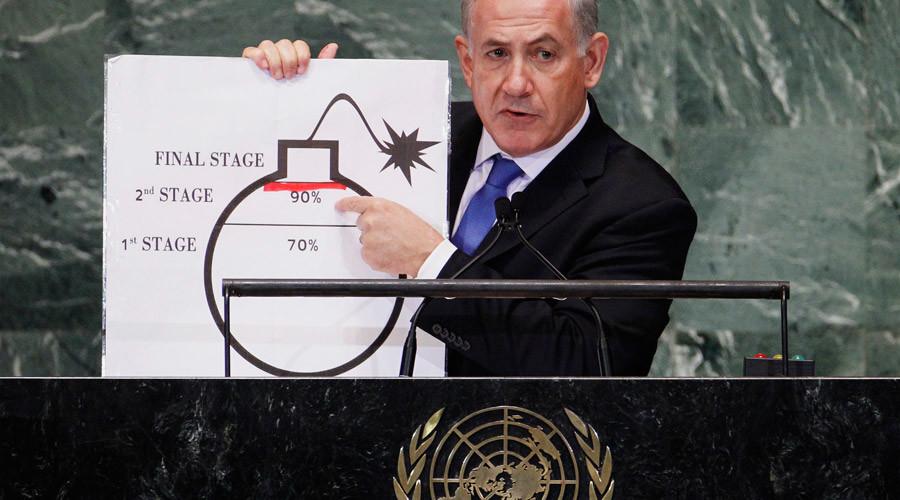
1. 'I just can't take it any more': Gaddafi’s interpreter collapses during marathon speech
UN guidelines state that speeches at the General Assembly should last no longer than 15 minutes. However, former Libyan leader Muammar Gaddafi, was in no mood for checking his watch as the self-proclaimed King of Kings of Africa spoke nonstop for 75 minutes in 2009.
While Gaddafi was in his element, spare a thought for his poor interpreter. After translating for over an hour he literally fainted and can be heard saying into the live microphone in Arabic, “I just can’t take it anymore.”
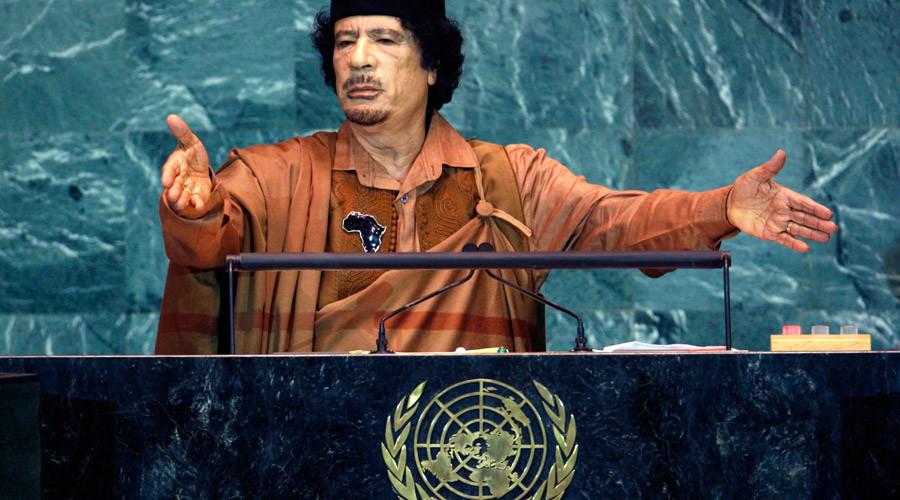
Gaddafi did not manage to get anywhere near the record for the longest speech at the General Assembly. This feat is held by former Cuban President Fidel Castro, who spoke for four and a half hours in 1960.

2. Meet Hugo Chavez! A perfect singer, musician and exorcist!
The former President of Venezuela, Hugo Chavez made his speech in 2006, condemning the then US president George Bush, mainly for decisions regarding Washington’s foreign policy.
“Yesterday, the devil came here,” he said, referring to Bush’s appearance before UN General Assembly. “Right here. Right here. And it smells of sulfur still today, this table that I am now standing in front of.”
Apparently to banish the devil once and for all from UN session, the late Venezuelan leader made the sign of the cross, brought his hands together and prayed, while looking towards the ceiling.
Three years later, Chavez produced another stunt that will live long in the memory of those attending the UN General Assembly. In 2009, he started to sing an improvised song and even began to play an invisible guitar. The only thing missing was a sombrero!
3. ‘Bibi and his cartoon bomb’: Netanyahu mocked for Iran nuclear weapon claims
Israeli Prime Minister Benjamin Netanyahu’s decision to show the General Assembly a cartoon bomb in 2012 literally ‘blew’ the audience away. However, Netanyahu was in no mood for jokes. He wanted to show a graphic of just how close he believed Iran was to making a nuclear bomb.
“This is a bomb, and this is a fuse,” began Bibi, sounding very much like a physics teacher. He said that Iran was 70 percent of the way to completing its "plans to build a nuclear weapon," and drew a "red line" at the 90 percent mark, claiming Tehran's first weapon would be ready "by next spring, at most by next summer."
4. ‘British PM is like Hitler, sorry, Churchill. I meant Churchill’ - Idi Amin
The notorious former Ugandan dictator Idi Amin had more than just a bit of a historical mix-up, while speaking at the General Assembly in 1973. He praised the British Prime Minister Edward Heath, by comparing him to… Adolf Hitler. This was not just a slip of the tongue, as he didn’t mean ‘hunter’ or ‘hitter’ – he quite clearly said ‘Hitler,’ a leader who he had previously praised on a number of occasions.
When asked by a German journalist to comment on calling Heath ‘Hitler,’ the former Uganda leader said:
"Not Hitler — I meant Winston Churchill. Mr. Heath is like Winston Churchill. Please make that Churchill. I don't want to quarrel with my friends. I don't want to open a second-line front against me," he almost begged.

5. Soviet leader Nikita Khrushchev, the man who banged his shoe... or did he?
What is Nikita Krushchev best remembered for? Allegedly banging his shoe at the UN General Assembly in 1960 is certainly near the top of the list. The former Soviet leader is believed to have taken off his piece of footwear and banged it on the table in order to get everyone’s attention. However, 55 years on and it is still being debated whether a shoe was actually used or not, with some people saying that there was no shoe at all and the pictures which were released were doctored.

Those who believe that the incident did take place said it was caused after a member of a delegation from the Philippines saying, "The peoples of Eastern Europe and elsewhere” were “swallowed up by the Soviet Union". This apparently made Khrushchev so angry that he first started banging a table with his fists suddenly he took off his right shoe, showed it to the surprised audience and then furiously banged it, until everyone at the session became silent and looked at the Soviet leader.
Kremlin promises ‘counter-steps’ in reply to US deploying nuclear weapons to Germany
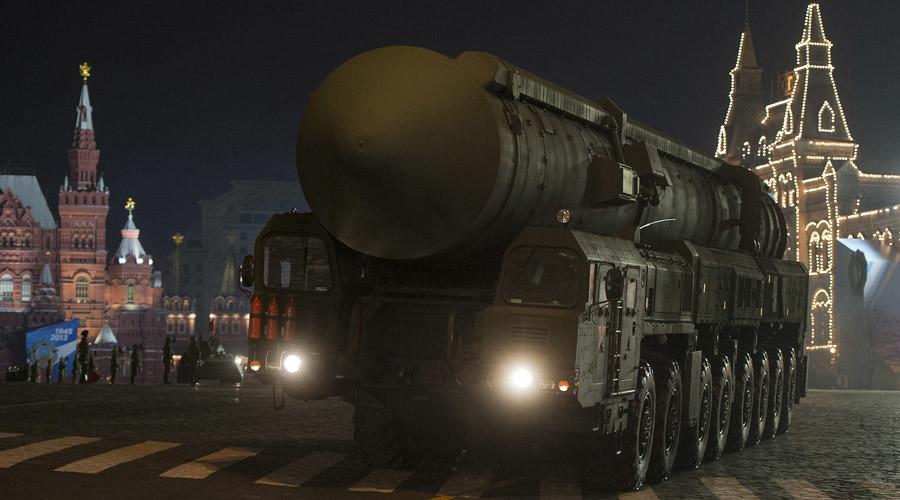
“It may lead to the destruction of the strategic balance in Europe. Therefore it would definitely cause Russia to take corresponding counter-steps and counter-measures in order to restore the strategic balance and parity,” Dmitry Peskov told reporters on Wednesday.
“This is another step and unfortunately it is a very serious step towards increase of tensions on the European continent. Such actions cannot be described as a step towards stronger trust and greater stability,” the Russian official added.
READ MORE: US to bring in new advanced nuclear bombs to Germany – report
The statement was prompted by news this week circulated by the German television channel ZDF, which found out from US budget documents about the US Air Force’s plans to bring new B61 nuclear bombs to the Luftwaffe’s Buchel Air Base. It currently hosts Tornado multipurpose aircraft that are capable of carrying atomic weapons. Twenty older bombs are stored at the base under a nuclear sharing deal, while it is the only facility in Germany, which has kept nuclear weapons since 2007.
The newer B61 Mod 12 bombs are more accurate and have smaller yields than modifications 3 and 4, which are currently deployed in Europe.
The Russian Foreign Ministry’s spokesperson Maria Zakharova earlier told ZDF that Russia was deeply concern about America’s plans to bring new nuclear weapons to Germany. She noted that Russia has reduced the number of tactical nukes it keeps by four times since the 1990s, while Moscow has also called for an international treaty, which would allow nuclear powers to only keep atomic weapons on their own territory.
“The comprehensive analysis of the situation points to the threat posed by the increasing military capability of NATO and its endowment with global functions, which it performs in violation of the international law, as well as the encroachment of the military infrastructure of NATO members on the borders of the Russian Federation,” Zakharova told German reporters.
READ MORE: Russia launches new missile defense to cover Atlantic
The head of the State Duma Committee for Defense, MP Vladimir Komoyedov (Communist Party) told TASS that Russia could deploy more weapons to its western exclaves – the Kaliningrad Region and the Crimean Republic – in order to retain a strategic balance of forces in Europe. However, the lawmaker noted that Russia had enough weapons, even on its mainland, to effectively ensure the security of the country.
The Interfax news agency quoted an unnamed source, “from military-diplomatic circles,” who said the Russian authorities were studying the details of the US plans to deploy new nuclear bombs to Germany and may decide to bring its newest Iskander-M tactical nuclear weapons to Kaliningrad if the threat is judged as being a valid one.
‘Lost world’ of dinosaurs lived near Arctic, new species discovery confirms
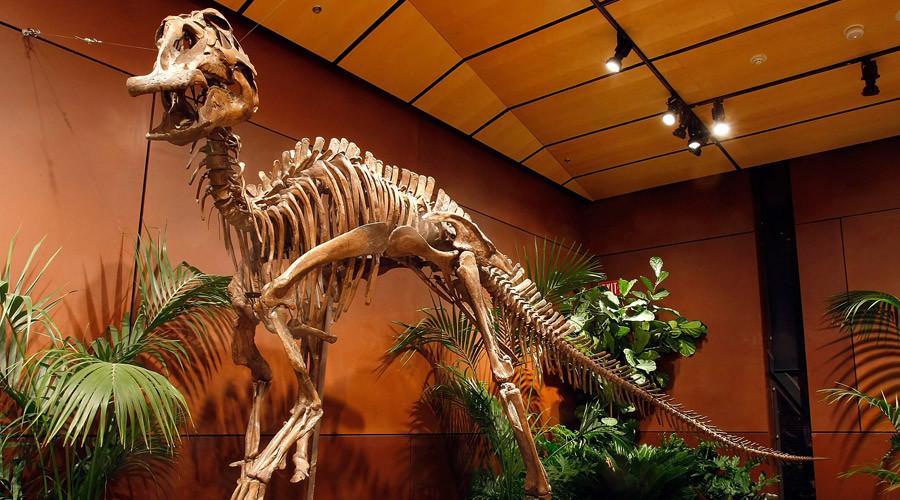
Research teams from Florida State University and University of Alaska Fairbanks are behind the amazing discovery of the previously unknown species, which was found in one of the most inhospitable places on the planet and hundreds of miles from where the dinosaurs were believed to have lived.
The discovery was made at a geological formation in northern Alaska, known as the Prince Creek Formation. What is immediately peculiar about the find is that the formation was deposited on an Arctic coastal flood plain. This means the animal lived as far north as land existed 69 million years ago, in the late Cretaceous period.
Named Ugrunaaluk kuukpikensis – or ancient grazer of the Colville River, the gigantic duck-billed species was a massive 30 feet (9 meters) and mainly ate leaves. The team added that the herbivore had hundreds of teeth that helped it chew through vegetation.
Its closest relative today would probably be the unassuming and cuddly-looking platypus.
The animal was a variety of hadrosaur that lived in the late Cretaceous period, when the Earth was warmer, and what is now Alaska, was covered in trees. However, that doesn’t mean the place wasn’t cold. The region used to be further up north than it is now.
READ MORE: Miniature T-Rex foot found on Welsh beach
“It was certainly not like the Arctic today up there – probably in the 40s (five to nine degrees Celsius) was the mean annual temperature,” Gregory Erickson, professor of biological science at Florida State university said, who is himself from Alaska.“Probably a good analogy is thinking about British Columbia.”
The discovery was detailed in Tuesday’s issue of the journal Acta Palaeontologica Polonica.
This makes it the fourth species found that is unique to northern Alaska, and supports the long-held theory that there is a unique group of Arctic-based dinosaurs that lived in far more inhospitable conditions than textbooks would have us believe. Common theories always supported the view that the animals lived in tropical-like conditions.
“What we’re finding is basically this lost world of dinosaurs with many new forms completely new to science,” Erickson mentioned in a statement.
“The finding of dinosaurs this far north challenges everything we thought about a dinosaur’s physiology… It creates this natural question. How did they survive up here?”
The Prince Creek Formation holds many secrets and is key to discovering this new lost world of dinosaurs scientists speak of. Since the 1980s, paleontologists have analyzed more than 9,000 bone fragments from various animals excavated there.
Digs continue in this very hard-to-reach site. Erickson and team believe the formation will reveal at least 13 different species of dinosaur, based on tooth fragments and other bone material. The figure does not include ancient birds, small mammals and some fish.
“Alaska is basically the last frontier,” Erickson says. “It’s virtually unexplored in terms of vertebrate paleontology. So, we think we’re going to find a lot of new species.”
This duck-billed herbivore is believed to be related to other finds in North America, which have occurred in Alberta, Montana and South Dakota.
Russia’s imports from non-CIS countries down 39%
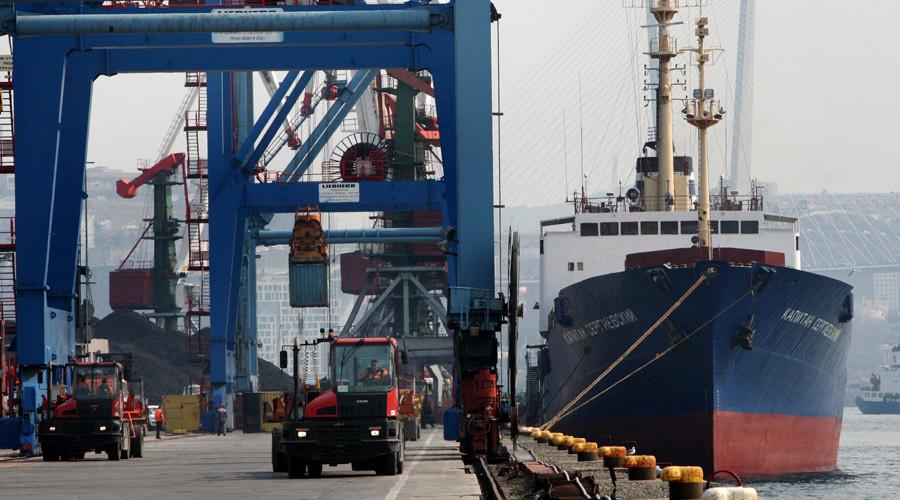
Last month, the value of goods imported from those countries averaged $14 billion, which is 1.7 percent less than in July.
READ MORE: Import of sanctioned products to Russia drops by half
The figures for the August show that all the four main import sectors which are food and food processing materials, chemicals, textile and footwear, engineering products, dropped compared to the same month in 2014.
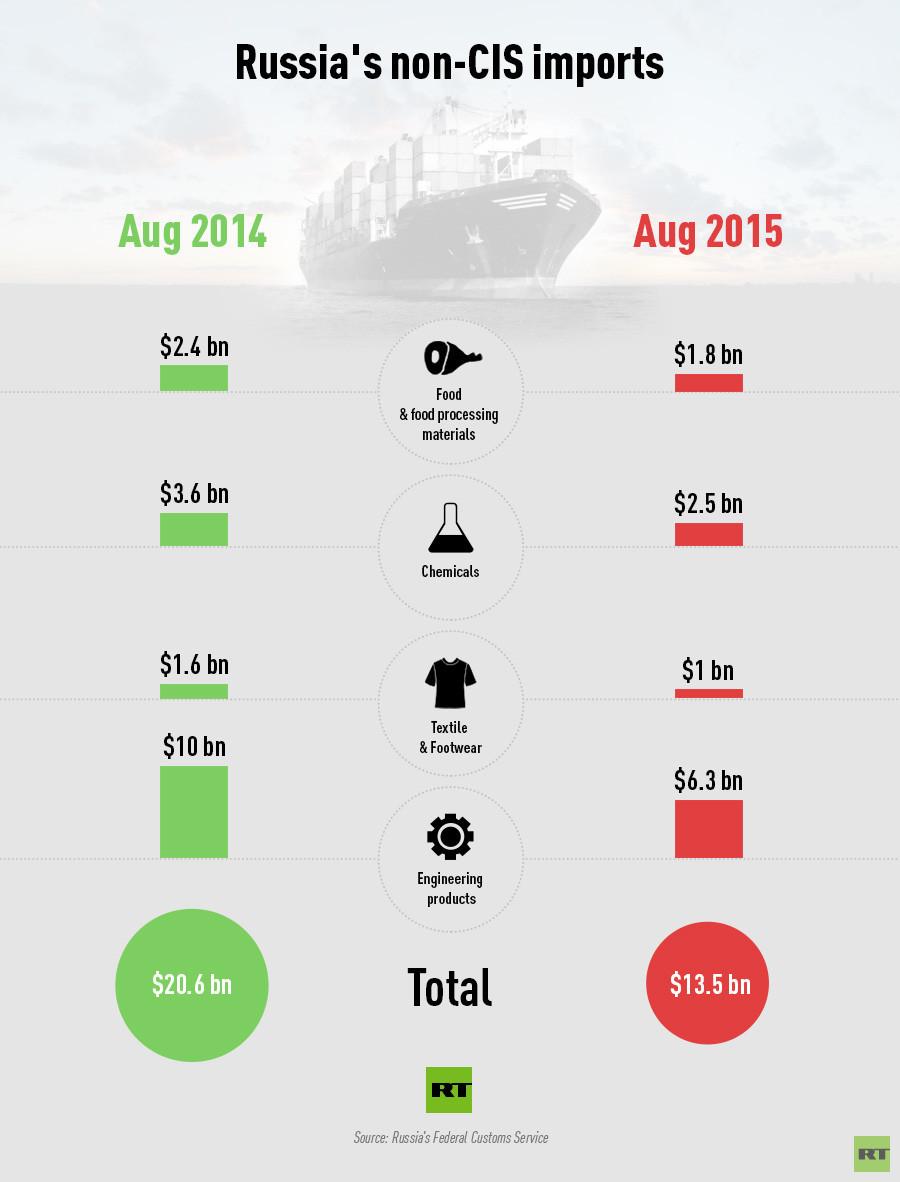
Food imports from outside the former Soviet Union were down 3 percent at $1.8 billion. Russia imported fruit and nuts worth $221 million.
Chemicals were down almost 10 percent in the first 8 months of the year, at $2.5 billion. Russia's pharmaceutical imports in August 2015 stood at $623 million.
READ MORE: Polish farmers ride tractors to Warsaw, demand aid after Russian trade ban (VIDEO)
Imports of textile and footwear stood at $1 billion last month, with a slight value growth.
The data also showed that Russia imported engineering products worth $6.3 billion over the period. In August the value of machinery and equipment imports dropped 36.7 percent compared to the same month in 2014.
READ MORE: Russia begins mass destruction of illegally imported food
Russian imports have fallen since the country imposed a food embargo last August as a reciprocal response to Western sanctions. The ban first applied to meat, poultry and fish, cheese, milk, fruit and vegetables from the United States, the EU, Australia, Canada, Norway, Japan and a number of other countries. Moscow recently extended the list of countries and started destroying illegal food imports.
Around 200 masked men storm Kharkov city hall in Eastern Ukraine (PHOTOS, VIDEO)
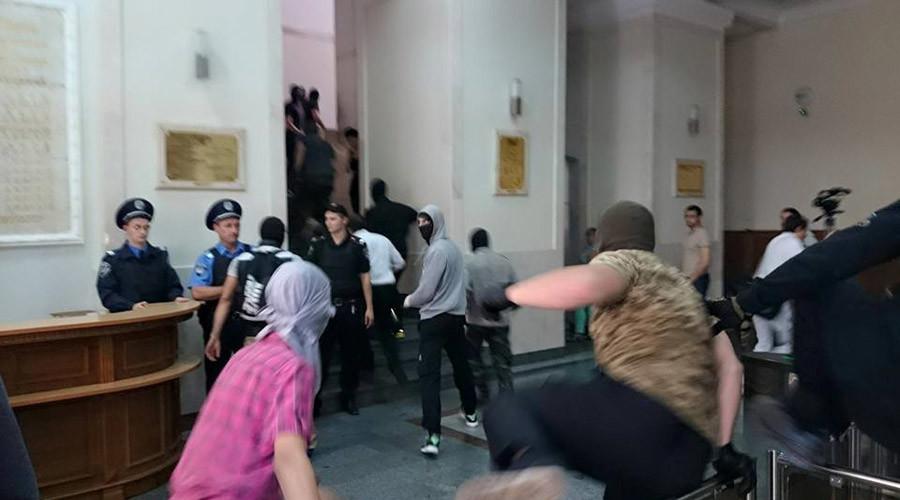
The masked men reportedly clashed with police and security forces at the city’s administration building. Those who have entered the building have also reportedly used tear gas, the Ukrainian 112 channel is saying.
The masked activists were seen holding flags with the insignia of the radical Azov Battalion, which is accused of committing numerous human rights violations in Eastern Ukraine, according to international watchdogs.
“There have been several small clashes between police and people in balaclavas. A few minutes ago somebody let off tear gas. The entrance to the city council is surrounded by a tight police cordon,” a journalist at the scene, from the 112 channel reported.
Earlier, at least 50 people wearing camouflage and balaclavas had taken part in a protest in front of the residence of the local politician, Mikhail Dobkin, who represents the ‘Opposition Bloc’ political party, which wants to find a peaceful solution to the current crisis in Ukraine. The masked men had not set out any demands. However, they were reported to have stated their aim was to “to throw Dobkin out of the city and not to let Kernes become Kharkov’s mayor,” according to the 112 channel.
Gennady Kernes has been the mayor of Kharkov since March 2010. Before the coup in Ukraine, he had been a strong supporter of President Viktor Yanokovich. However, he subsequently switched sides and has backed the new Ukrainian government in order to keep his position.
READ MORE: Mayor of Kharkov, Ukraine shot in back, hospitalized - press service
The Ukrainian press later reported that the group had left the building and had departed from the scene.
China rattles markets as manufacturing shrinks to 78-month low

This is the worst result since March 2009, and is the seventh month in a row factory activity has fallen.
"The principle reason for the weakening of manufacturing is tied to previous changes in factors related to external demand and prices," said Dr. He Fan, chief economist and director of research at Caixin Insight Group.
READ MORE:
"Fiscal expenditures surged in August, pointing to stronger government efforts on the fiscal policy front. Patience may be needed for policies designed to promote stabilization to demonstrate their effectiveness," he added.
The markets are clear that the Xi Jinping government’s goal to reach seven percent growth isn’t feasible.
"The weaker than expected PMI suggested domestic and external demand remained sluggish. It's almost certain China's economic growth will slide below 7 percent in the second half of this year," economists at Minsheng Securities told Reuters.
READ MORE:
The final PMI index for September will be released on October,1.
Asian markets responded negatively on Wednesday to the factory activity contraction. Investors turned to safer assets such as government bonds amid fears of a weakening world economy.
The Shanghai Composite was 2.19 percent down at the close, Japan's Nikkei lost 1.96 percent, the Hang Seng dropped 2.28 percent and Taiwan’s TSEC 50 Index was 2.06 percent in the red. This was the biggest drop for Asian markets this month since ‘Black Monday’ at the end of August.
READ MORE:
"The industrial sector in China remains a concern, indicating that the economy is not out of the woods yet, while the Fed's comments last week indicate a glass half-empty view of the global economy," Tai Hui, chief Asia markets strategist at JP Morgan Asset Management in Hong Kong told Reuters.
Own vomit comet: Swiss make first zero-G flight

A reduced-gravity aircraft flies a series of parabolas, climbing up and plunging down, with passengers experiencing some 20 to 25 seconds of microgravity on each hump. Initially used to train crews for space missions, NASA’s version was dubbed ‘vomit comet’ by the press.
The three-hour Swiss test flight over the northern Mediterranean flew from Dübendorf Air Base in the canton of Zurich. It was performed on a new A310 operated by Novespace, a company collaborating with the French national center for space studies (CNES). A similar special airliner, an Airbus A300 called Zero-G, has been used in France since 1997 out of Bordeaux-Mérignac Airport.
The Airbus that was used in the Tuesday flight for Swiss researchers is ‘Konrad Adenauer’ of the German Air Force, which was retrofitted as a new Zero-G and made its maiden flight in France in May this year.
The scientists from the University of Zurich (UZH) and the Federal Institute of Technology at Lausanne (EPFL) performed a series of microgravity experiments. An UZH team continued the study of the effect of a zero-G environment on human immune cells they started on the International Space Station.
When the plans to launch reduced-gravity flight from Switzerland were reported in summer, UZH said it planned to offer commercial flights at about $9,400 per ticket. The A310 has room for 400 passengers, but scheduling would depend on the demand and the university’s own plans for the plane.
UZH is competing with several other operators of commercial zero-gravity experience worldwide. A company called Swiss Space Systems (S3) has announced plans for such flights from several locations, including Switzerland with the price tag starting at $2,700 – advertised as the cheapest in the industry.
Russia’s space agency offers seats at its Ilyushin IL-76 MDK zero-g aircraft to tourists, when the plane is not used to train Russian and foreign cosmonauts.
Jet generators: Boeing inventor suggests harvesting aircraft noise for energy
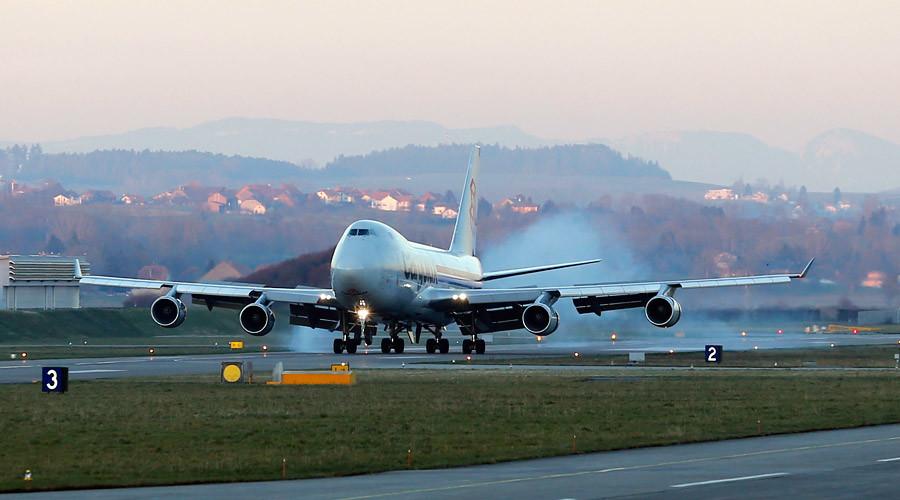
The idea outlined by engineer Chin Toh in a patent application is to line runways with sound collectors, which would transform sound energy into airflow, which would in turn rotate turbines to generate electricity.
The application does not estimate the amount of electricity that can be recycled from this acoustic energy. But this may be the weak point of the idea. Sound has a relatively low energy density. For the energy needed to heat a 250ml cup of coffee from 25C to 75C – a half-minute job for a microwave – amounts to what human screaming produces in about a year-and-a-half.
Engine noise is certainly louder and thus has higher energy than human voice. Engine roar levels are around 140 decibels compared to 80 decibels for a yell.
“It’s more efficient to collect and store sunlight using solar panels than to harvest energy from sound,”says David Cohen-Tanugi, vice-president of the MIT Energy Club.
So the cost of building sound traps and turbines in airports may be too high for the idea to be economically feasible. Airports may just have to stick to muffling the noise to reduce pollution.
Government rejects bill to introduce private military contractors in Russia - report
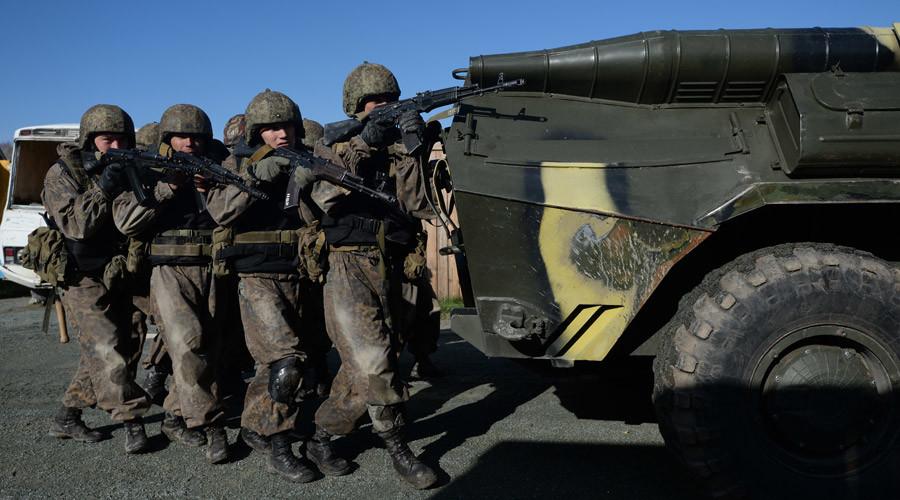
The main sponsor of the bill, MP Gennady Nosovko of the center-left party Fair Russia was disappointed at its rejection. However, he has promised to rework the draft and submit it again in November. He added that he did not agree with many of the government’s conclusions regarding their review of his bill, but refused to go into detail.
He mentioned that if the reworked piece of legislation was rejected again, he would bypass the government and send it directly to the State Duma before the end of 2015.
READ MORE: Bill to allow private military contractors submitted to Russian parliament
“Russia needs private military companies that would protect its interests in the Arctic and in the Middle East,” he told reporters.
He also mentioned that the use of private military companies would increase competitiveness, while also providing jobs for military and law enforcement veterans.
Nosovko agreed that strong government control was essential for private military contractors to function successfully. However, he noted that the government had not decided which agency or ministry would be responsible for keeping them in check, if the bill was signed into law.
Izvestia quoted an unnamed source in one of Russia’s “power agencies” who said the government had rejected the bill because a section concerning state regulation lacked detail.
“The main question is which organization, the Defense Ministry or the Federal Security Service of the Interior Ministry, would control tens thousands of “Rambos” to make sure that they would not turn their arms against the state itself,” the source said.
The newspaper added that according to its information, the Defense Ministry and the Federal Security Service strongly opposed the very idea of private military companies in Russia because such organizations could potentially become free of state control and could even be used against the government. However, both the Defense Ministry and the FSB have declined to comment officially on the issue.
This is not the first time that lawmakers have tried to pass legislation, which would see the introduction of military contractors in Russia.
In July, two lawmakers from the parliamentary majority caucus United Russia said they had prepared a bill that would grant private military companies broad rights, but also give control over them to the Defense Ministry, which would use them as an immediate response to various threats.
READ MORE: Russian 'Blackwater'? MPs call for local security industry loophole
While Russia does not have private military companies, private security firms are abundant. This includes independent contractors and security branches of major corporations. According to the Interior Ministry’s statistics, there are currently over 60,000 such companies in the country with about 700,000 employees.
Those favoring the introduction of private military contractors in Russia say that if the legislation is eventually passed, it could create over 500,000 jobs.
Cameron to exploit refugee crisis to influence EU negotiations
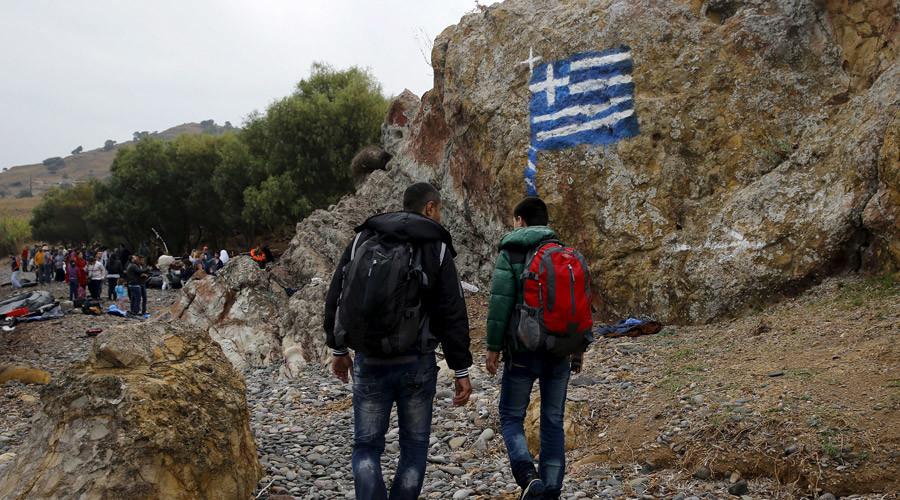
He said talks with other EU officials in Brussels had revealed that eastern European nations are realizing the problems caused by large-scale immigration, after taking in large numbers of refugees and migrants.
He added the Prime Minister would use the crisis as leverage to increase support for his renegotiation of Britain’s membership of the EU.
Interior ministers agreed on Tuesday to distribute individuals fleeing war and violence across member states. They over-rode protests from a number of eastern European countries, which have experienced huge numbers of migrants attempting to travel across their borders.
“The migration crisis has thrown into stark relief some of the issues that the European Union has to deal with,” Hammond said.
“That plays directly into some of the issues that we are raising in our renegotiation proposition.”
“Interestingly, some of the countries that we have seen today who have the most robust views on the external migration agenda, have been the ones also with the very strong views around ‘no change to freedom of movement internally,’” he added.
“The fact we are having this broader debate about migration flows within Europe of newly arrived migrants, is perhaps focusing attention of some people in a way that hasn’t been focused before about the challenges migration at scale presents,”Hammond concluded.
However, Cameron will face a battle in Brussels, after he was deserted by Denmark, one of his political allies on EU reform.
The debates come as the first Syrian refugees to be re-settled in the UK, arrived on Wednesday, according to the Home Office.
No details were provided about the exact number of refugees arriving or where they will be housed.
The individuals are part of the recently-announced plan to take in 20,000 Syrian refugees before 2020, and will be relocated under the vulnerable persons resettlement scheme.
The refugees will not be granted asylum immediately, but instead will receive a humanitarian status, which allows them to apply for asylum after five years.
Cameron emphasized the refugees would be taken from UN-registered camps in Lebanon and Jordan and they would select the most deserving.
A Home Office spokesperson said: “We are working closely with the UNHCR and local authorities to make sure we are ready to welcome more Syrians who desperately need our assistance.
“Today a number of people have arrived in the UK as part of the vulnerable persons resettlement scheme. As the prime minister announced earlier this month, we will resettle 20,000 Syrians over the course of this parliament through this scheme,” the spokesperson added.
Egypt to buy Mistral warships originally built for Russia from France
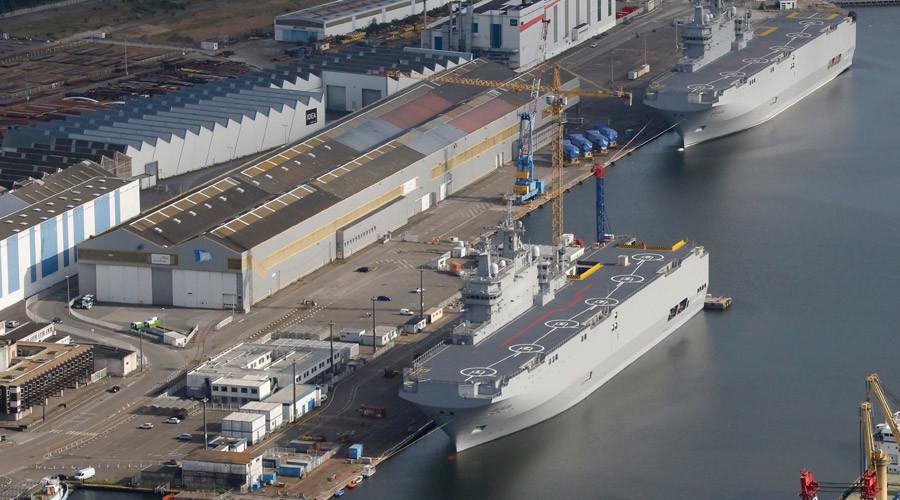
"They agreed on the principle and the terms of the acquisition by Egypt of the two [ships]," the French President Francois Hollande’s spokesman told reporters in a statement on Wednesday.
The deal was agreed at a high-profile meeting between French and Egyptian delegations in Paris. The final decision was announced by the president’s office on Wednesday, though the cost of the deal has not been released.
It had earlier been reported that several countries had been interested in purchasing the amphibious carriers, which were originally built for the Russians. The interested parties included Canada, India, Singapore and Egypt, who Paris eventually agreed to sell the ships to. However, negotiations between the two sides almost broke down last week, as Paris and Cairo could not agree on a price for the two vessels, reported La Tribune newspaper.
READ MORE: Putin, Hollande officially cancel Mistral contract, Paris to pay less than €1.2bn
The Mistrals contract, worth €1.2 billion ($1.3 billion), was signed by France’s DCNS/STX and Russia’s Rosoboronexport in 2011. The contract specified that two French helicopter carriers would be delivered to Russia, the first in 2014 and the second in 2015. Russia was to partly manufacture the vessel hulls and provide its own military electronic equipment for the warships.
However, the French government decided not to hand the vessels over to Moscow after it came under intense political pressure from the US and its European allies following Crimea’s reunification with Russia and the outbreak of armed conflict in eastern Ukraine.
France also agreed to refund €950 million ($1 billion) to Moscow after Paris cancelled the deal. Had the agreement gone ahead, it would have been one of the greatest arms sales ever to have taken place between Russia and a NATO member.
LISTEN MORE:
Kiev stops debt payments, faces technical default
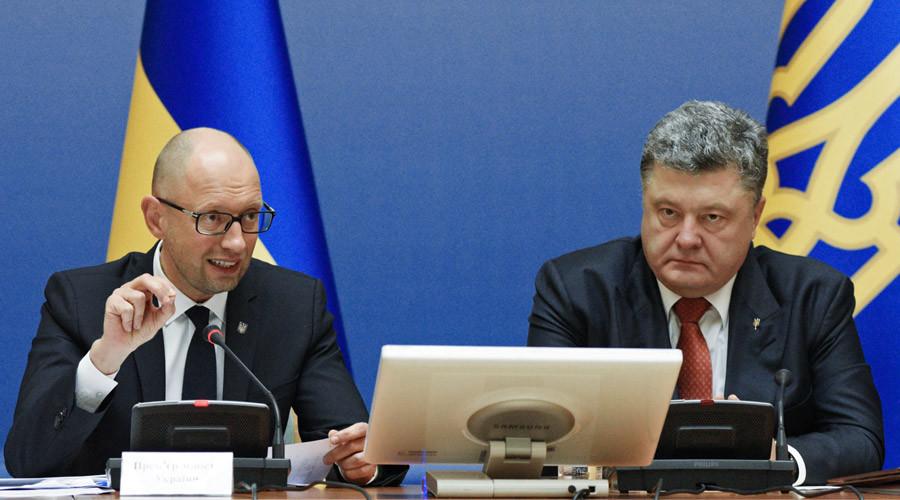
According to a document published on the website of the Ukrainian government, the restructuring applies to the $3 billion Eurobonds purchased by Russia. However, payments on them have not been suspended.
The list included seven issues of Ukrainian government bonds.
"We are talking about restructuring $15 billion, agreed by 13 of 14 Ukrainian creditors. Russia didn’t accept the haircut and, therefore, its $3 billion is not included,” said an expert polled by Russian business daily Kommersant.
READ MORE: Some of Kiev’s Western creditors refuse haircut
Kiev has stressed that Moscow will not get more favorable terms than other creditors.
The Kremlin recently responded: “The so-called debt operation, which Russia takes no part in, cannot ease Ukraine’s debt burden. It is in the debtor’s best interests to pay back the Russian Federation immediately, as a default on these liabilities will turn out much more expensive for Ukraine, which will have to pay both litigation costs and penalty interest for overdue payments.”
Ukraine is obliged to restructure its multibillion dollar debt in order to receive a $17.5 billion loan from the IMF. The lack of an agreement with Russia, one of Ukraine’s biggest creditors, thwarts the deal.
Syrian rebels rescue British mother-of-5 on the run from ISIS
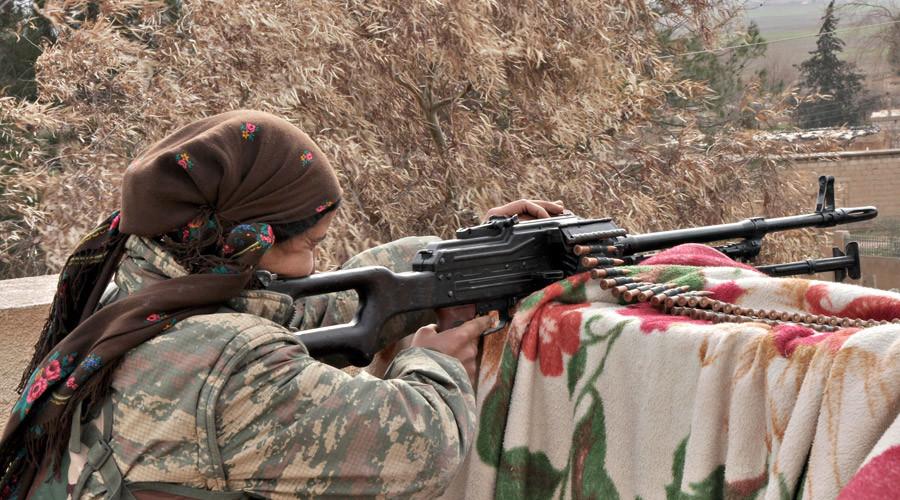
According to Aleppo-based rebel group the Levant Front, Shukee Begum was reunited with her “people” on Monday and is in good health. The group claimed in a statement on social media that it had freed the family from “unknown kidnappers.”
“They are now in safe hands and will be handed to their family soon,” the group said.
Begum reportedly entered Syria late last year after being smuggled through the Turkish border hoping to join her husband, Muftah al-Deen, an IS fighter.
Details of Begum’s stay in Syria are murky.
In a video obtained by the Sunday Times last month, Begum insists she initially went to Syria in order to persuade her husband to return home. She explains that she had spent the previous 10 months teaching English to children of foreign jihadists in the town of al-Bab, which is controlled by IS, in northern Syria. When asked to explain her reasons for leaving the terrorist organization, Begum, clad in a full niqab denounced the group as being “not Islamic.”
Syrian sources told the Sunday Times she appealed to smugglers to rescue her as she was frightened of coalition airstrikes.
The smuggler helped her escape IS last month, but later kidnapped her when she failed to pay the smuggling fee.
READ MORE: British jihadist woman escapes ISIS to Turkey
A spokesperson for the Foreign Office said a British woman and her five children were reported missing in Turkey, but did not confirm if it was the same case.
“We continue to work closely with the Turkish authorities on the whereabouts of a British national and her children, originally reported missing in Turkey, and stand by to provide consular assistance,” she said.
Stock markets on cusp of ‘another crash’ warn financial analysts

IG Market Analyst Joshua Mahony asked whether the world was on the cusp of “a major selloff” as the US Federal Reserve and Bank of England (BoE) consider raising interest rates.
Mahony said artificially-low interest rates held by the Fed and BoE had acted like “steroids” and brought the markets to “heights previously unseen.”
The stark warning comes as commodity prices on the FTSE 100 slumped in recent days, with mining, oil and copper prices falling sharply.
“With the FTSE 100 tumbling over 120 points in two hours [Tuesday] morning, it is becoming clear that there is a distinct possibility of yet another crash in financial markets,” Mahony said.
“The steroids of monetary policy may have brought us to heights previously unseen in global markets, yet as the Fed and BoE begin wean us off this artificial high, we are coming to find ourselves perilously exposed to another major selloff.”
Analysts continue to express concerns about market stability after the Shanghai index fell 8.5 percent on ‘Black Monday’ in August, its biggest drop since 2007.
China’s surprise devaluation of its currency in early August was blamed for the fall, along with slowing economic growth and investor fears that the stock market had peaked.
Nearly £44 billion (US$67.3 billion) was wiped of leading FTSE 100 companies on Tuesday, with mining stocks being the biggest casualties.
This was due to oil prices falling sharply by 2.5 percent and copper hitting a two-week low.
Mining firm Glencore’s stocks fell to a new intraday low of 99.59 percent after the company cut dividends recently, prompting a loss of confidence among investors.
Anglo American plc and Antofagasta – both mining companies – saw losses of more than 6 percent.
This slump in commodity prices combined with plummeting Volkswagen shares as the emissions scandal continues to unravel prompted a bleak outlook from Mahony.
“With the [Federal Open Market Committee] meeting and Greek elections both resolving in a positive manner for financial markets and global stability, it would make sense that we saw some form of relief rally in response,” he said.
“However, the weakness seen since Thursday’s Federal Reserve decision [to hold interest rates] is highlighting a high possibility that we are due to embark on yet another major selloff in global indices.”
Archeologists unearth Moscow’s oldest street

The find is located in a historic city area called Zaryadye, east of the Kremlin. The name means ‘behind the rows’ and refers to the marketplace that was next to the fortress. Wealthy merchants and warriors lived there and did business.
The area saw demolishing and massive construction effort in the 1930s that completely changed Zaryadye and left behind a formidable foundation from an abandoned project of a gigantic ministerial building.
In 1967, the infamous Rossiya Hotel was constructed on that foundation, but after decades of service the Moscow authorities decided to demolish it in 2007. With the gigantic building gone, archeologists got a chance to excavate one of the oldest parts of the Russian capital.
The dig produced a trove of historic artifacts from the medieval times, when Zaryadye was a major trade hub in Moscow, scientists of the Archeology Institute of the Russian Academy of Sciences reported Wednesday.
Those include what used to be the street called Velikaya (Great), which led from the Kremlin to a pier on the Moskva River to the south. The 6.5-meter-wide street appeared on the maps during the early stages of the city’s expansion in 12th-13th centuries.
The upper layers of the dig revealed logs and pavement stones from 17th-18th centuries – but below them are logs from earlier centuries. The find will help the researchers compile a dendrochronology chart for old Moscow, a challenge that remained elusive for several decades.
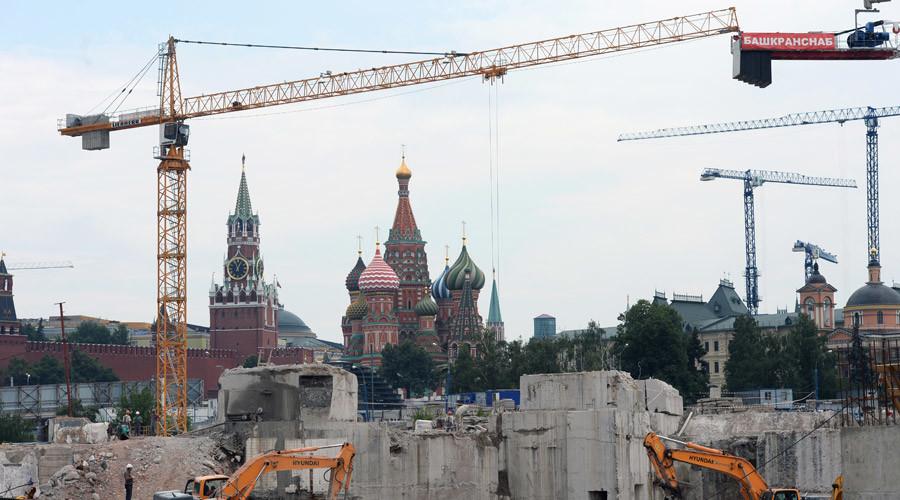
READ MORE: 1,000yo skeleton of 'violent death' victim found after tree uprooted in Ireland
The archeologists also discovered several artifacts at the dig site that give a glimpse at how the busy trade district looked centuries ago. One is a fragment of a pilaster from a church or a nobleman’s palace with a distinct ornament.
“This ornament belongs to a rare but documented Renaissance form of the Italian architecture. This stone can be linked to the Russo-Italian period of construction, the time when the modern Kremlin walls, its main cathedrals and the great prince palace were created,” said Leonid Belyaev, the head of the Muscovite Rus Department at the institute, who leads the excavation.
He added the expedition is expected to produce many new finds and shed light on the history of Moscow and Russia.
Chamber of secrets: Centuries-old remains of 50 people found in Westminster Abbey toilet block

The bones are thought to have belonged to people from the 11th or 12th centuries, with the body of a small child found amid the remains of 50 adults.
“What the child is doing there is one of the many unanswered questions,” Westminster Abbey’s archeologist Warwick Rodwell told the Guardian.
READ MORE: 1,000yo skeleton of 'violent death' victim found after tree uprooted in Ireland
“It is a feature of many ecclesiastical sites that you find the remains of women and children in places where you might not quite expect them,” Rodwell added.
The child was buried in a wooden coffin, leading experts to believe that he or she was a person of some importance.
The remains were found as workmen demolished a 1950s-era lavatory block in order to make room for a new tower space through which visitors will eventually be able to access the abbey’s attic.
Many of the bones were densely stacked together and experts think they may have belonged to senior clergy given their proximity to the main building, which was itself reserved for kings, queens and nobility.
Westminster Abbey is not the only hub of British power to have revealed dark secrets recently.
In August, the skeletal remains of 30 people thought to have perished during the Great Plague of 1665 were unearthed by construction workers in London's financial district.
READ MORE: 30 skeletons from Great Plague of 1665 discovered in City of London
Railway workers discovered the skeletons 350 years after the Bubonic plague engulfed London, as they set about digging up the Bedlam burial ground in Liverpool Street.
A headstone at the historic site marked “1665” was discovered, suggesting that the mass graveyard dates back to the outbreak of the deadly plague across London.
Experts believe the bodies were buried on the same day in individual coffins, which have since rotted away, leaving a mass of distorted skeletons.
Gummy bear maker loses ‘Gold Bear’ battle
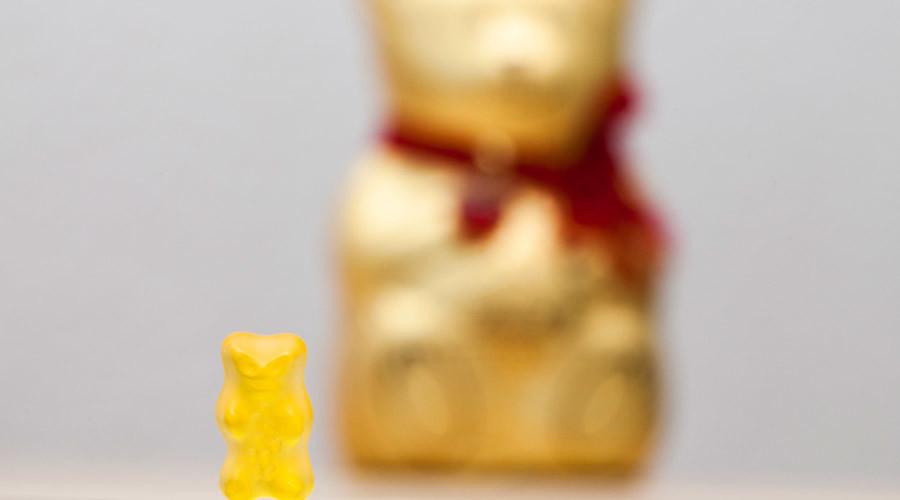
German confectioner Haribo has lost its long-running copyright battle with Swiss chocolate maker Lindt & Sprungli over the classic ‘Gold Bear’ identity.
"Lindt's sale of bear-shaped chocolates wrapped in a golden foil with a red ribbon is neither a violation of Haribo's 'Gold Bear' trademark nor an illegal imitation of the fruit gum products," said the German court decision.
In 2012 Haribo brought a claim against Lindt, arguing that its chocolate teddies were a "three-dimensional representation" of its gold bear and that consumers could be mistaken because of the similarity of the two bears.

However, the court in Cologne ruled that Lindt had a clearly visible logo on the foil and that the chocolate teddy looked more like the chocolatier's 'gold bunnies' than the Haribo sweet.
Lindt started selling its bear-shaped chocolates wrapped in golden foil under the brand name "Teddy" at Christmas 2011. Haribo has been making its multi-colored gummy bears since the 1960s, and has used the trademark ‘Gold Bear’ since 1975.
The gelatin Haribo bear’s packaging features a cartoon bear with a red ribbon around its neck while Lindt's gold-foil chocolate bear has a real ribbon around its neck.
READ MORE: ‘Racist candy scandal a tactic to use political correctness as a tool to silence people'
The German confectioner can appeal against the ruling to the Federal Court of Justice.
